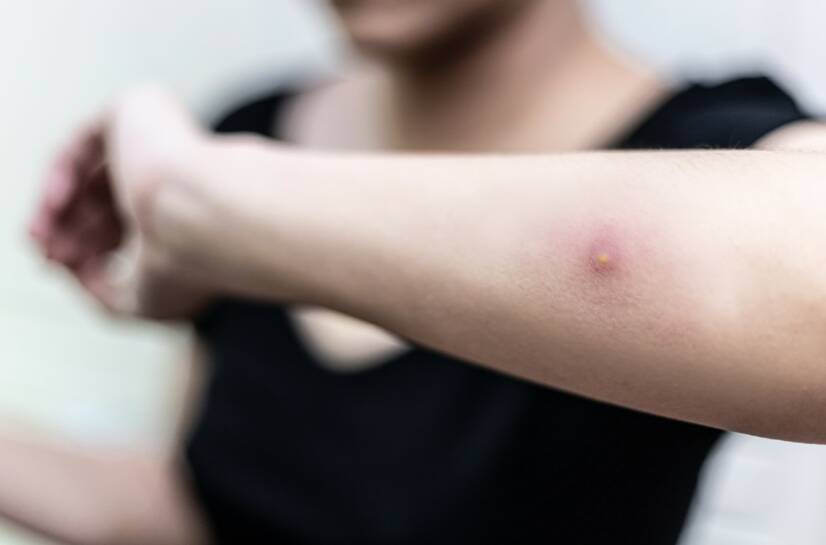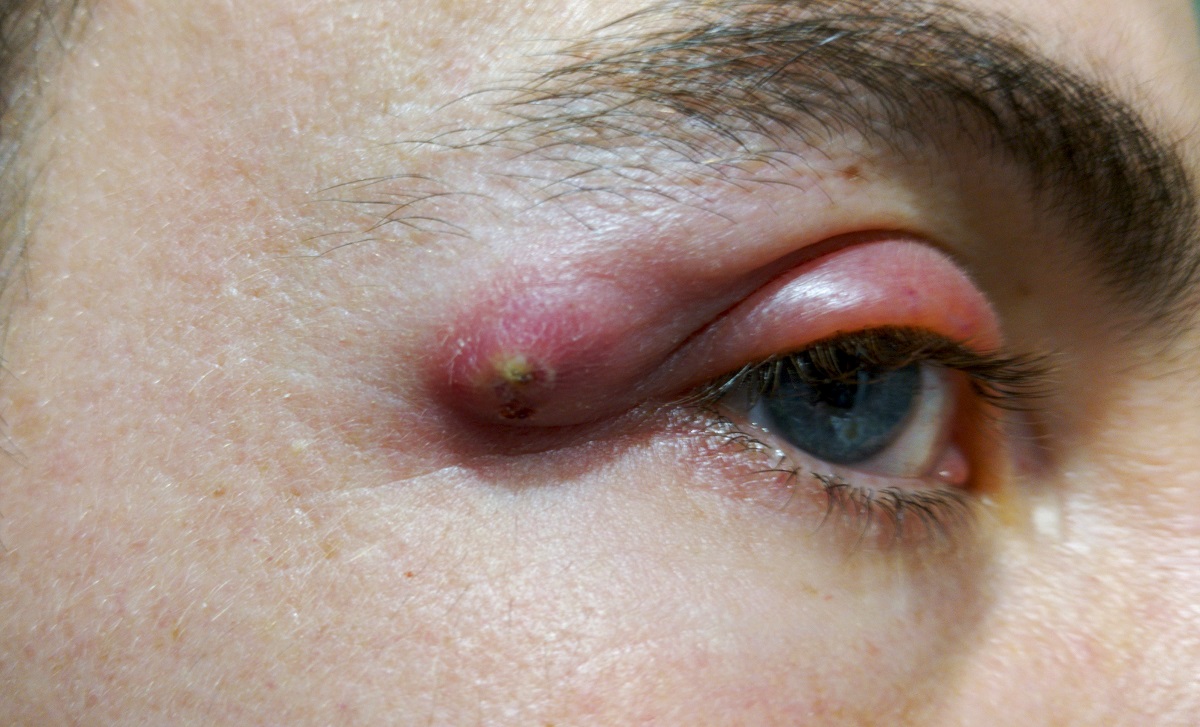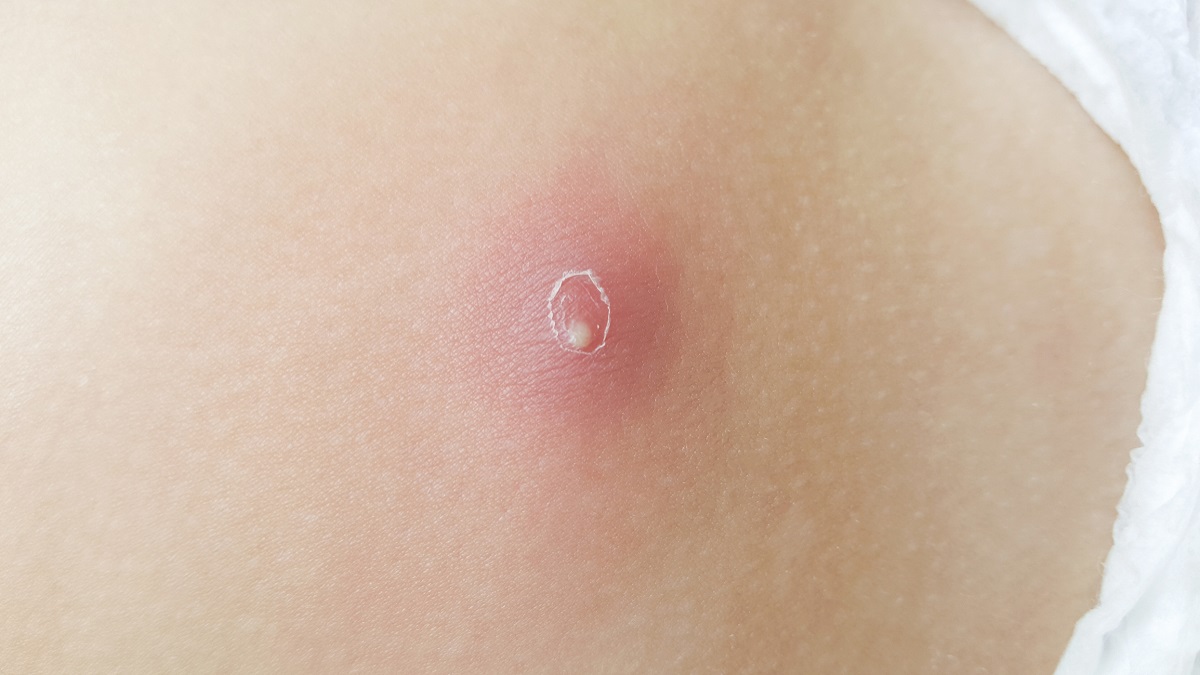- webmd.com - Abscess
- my.clevelandclinic.org - Abscess
- sciencedirect.com - Skin Abscess
- researchgate.net - Bacterial Skin Abscess
- healthline.com - What Causes a Skin Abscess?
- prolekare.cz - Microbiota, Immunity and Immunologically Mediated Diseases
Skin abscess: what is it, what causes and symptoms of skin infection?

Most patients are diagnosed with an abscess associated with internal diseases. But an abscess can also affect our skin.
Most common symptoms
- Skin pain
- Fever
- Increased body temperature
- Rash
- The Island
- Buds
- Itchy skin
- Reddened skin
- Winterreise
Characteristics
An abscess is defined as a circumscribed cavity that contains pus. It is an inflammatory disease. It mainly affects patients with metabolic disorders and patients with a weakened immune system.
A skin abscess is an uncomplicated superficial infection of the skin.
The following table gives examples of complicated and uncomplicated skin infections
| Complicated superficial skin infections | Uncomplicated superficial skin infections |
| Staphylococcal Scaled Skin Syndrome (SSSS) | Furunkul |
| Infected pressure defects | Furuncle |
| Ulcer in chronic venous insufficiency | Ecthyma |
| Infection of the diabetic foot | Folliculitis |
| Lymphangitis | Abscess |
| Erysipelas | Impetigo |
| Hidradentis suppurativa |
See also:
Furuncle: What are the causes of skin inflammation? + What is a carbuncle
Causes
Skin infections are caused by an imbalance between the ability of microorganisms to cause disease and the immunological defences of the host. Both pathogenicity and virulence depend on the structure and metabolic products of the microorganisms.
Whether an infectious skin disease develops after exposure to a microorganism depends on:
- the number of microorganisms
- the infectious dose
- the structure
- metabolic processes
- the quality of innate and acquired non-specific and specific immune defence mechanisms
Factors involved in the successful colonization and multiplication of microorganisms in the body include:
- contact with skin and mucous membranes
- adherence to the target cell
- struggle for and use of nutritional factors
- escape from specific defence mechanisms
- intrusion into host cells and tissues
Currently, there is an increase in skin diseases that are associated with dysbiosis. In a healthy person, it can be caused by unfriendly topical treatments, cosmetics or working with cleaning products.
In most cases, the manifestations of skin diseases are linked to a specific part of the body. These parts of the body are characterised by a certain bacterial composition.
Every single person has a unique microflora.
Factors such as:
- geographical differences (variations in UV radiation)
- occupation
- choice of clothing
- cosmetics
- high humidity
- low or high air temperatures
- UV radiation
The skin is the interface between the environment. It serves as a physical barrier that protects our body from attack by foreign organisms or toxic substances.
The skin is colonised by a diverse microbial community (bacteria, fungi, viruses and mites).
Such microbial communities live in various places on the human body (face, hands, axillae). Most bacteria are found in the hair on the head, in the folds and in areas of increased perspiration.
Lower numbers of bacteria are found in the so-called dry areas (behind the ear).
What is the skin microflora?
The skin microflora (microbiota) is the main component of skin protection. It interacts with the natural immune system. Together, it acts as a barrier against pathogen attack and against the overgrowth of pathogens on the skin surface.
Other tasks of the skin microflora include the breakdown of sweat and sebum, the maintenance of the skin's natural homeostasis and the production of bacteria-killing substances. In this way, it protects our skin from the development of skin diseases.
The skin microflora is made up of bacterial genera from the Actinobacteria, Firmicutes and Proteobacteria strains. These bacteria are bound to specific localisations on the human body.
The physiological colonization of the skin is mainly composed of Staphylococcus epidermidis, Propionibacterius species, Corynebacterium species.
On sites that are covered with sebum, mainly lipophilic Propionibacterium genera are found.
Moist areas of the skin are mainly inhabited by the genera Staphyloccocus and Corynebacterium.
In addition to bacteria, fungi of the genus Malassezia are also found on our bodies. They are mainly found on the trunk and arms. Other genera of fungi are also found on the feet, and for this reason various infections are most often found on the feet.
The microbial community can be divided into 2 groups:
- resident microbes - a stable group of bacteria. Their presence on the body is constant. They are beneficial to the human (host)
- Transient microbes - transiently contaminate the skin. Their quantity and proportion depend on the microbial load of the environment
Did you know that...
Staphylococcus epidermidis makes up more than 90% of the skin flora. Staphylococcus aureus and bacteria of other strains make up the remaining 10%.
Skin infections are mainly caused by Gram-positive bacteria. Staphylococcus aureus is the most common pathogen and is the causative agent of various skin diseases (cellulitis, abscesses and wound infections).
Group A streptococci (Str. pyogenes) are the causative agents of necrotizing fasciitis. Group B streptococci (Str. agalactiae) mainly affect diabetics.
Pseudomonas aeruginosa causes foot defects. It occurs mainly in peripheral arterial disease, stab wounds and in patients who have undergone hydrotherapy.
When are you at increased risk of developing a skin abscess?
Risk factors for developing a skin abscess include:
- weakened immune system
- Diabetes
- metabolic disorders
- chronic skin diseases (acne, eczema)
- smoking
- obesity
- close contact with a person who has a staphylococcal infection
Minor factors include:
- viruses
- parasites
- fungi
- tuberculosis
See also:
Parasitic mould, candidiasis: can skin mould harm organs?
Symptoms
A skin abscess can be thought of as a bump on the skin. Over time, it grows, becomes red and the patient feels pain in the affected area. The skin is inflamed at the top of the abscess. The area around the abscess may feel warm to the touch.

In some cases, general symptoms may also occur:
- fever
- chills
- weakness
- malaise
- lack of appetite
The intensity of the symptoms depends on the location of the abscess. If it is located under the skin, it appears as a painful lump oozing pus.
If it is located deep in the body, it causes organ or tissue dysfunction. In this case, the patient has an elevated body temperature.
A skin abscess can form anywhere on the skin. Typical sites include:
- back
- face
- chest
- buttocks
In some cases, an abscess can cause serious complications:
- fever
- swollen lymph nodes
- spread of infection to other areas
- blood poisoning
- endocarditis
- development of multiple abscesses
- necrosis of tissue in the abscess area
- acute bone infection
Diagnostics
Diagnosis of the disease is based on:
- medical history
- clinical picture
- the general condition of the patient
- evidence of inflammatory parameters
Course
The disease has an acute course. The patient may develop general symptoms (e.g. raised temperature). The affected area is swollen and reddened. The different stages of the disease differ in the depth and extent of skin involvement.
The prognosis of the disease is uncertain, depending on several factors:
- the general condition of the patient
- other internal diseases
- early treatment

How it is treated: Skin abscess
Treatment of skin abscess: surgery, drugs, antibiotics + topical
Show moreSkin abscess is treated by
Other names
Interesting resources










